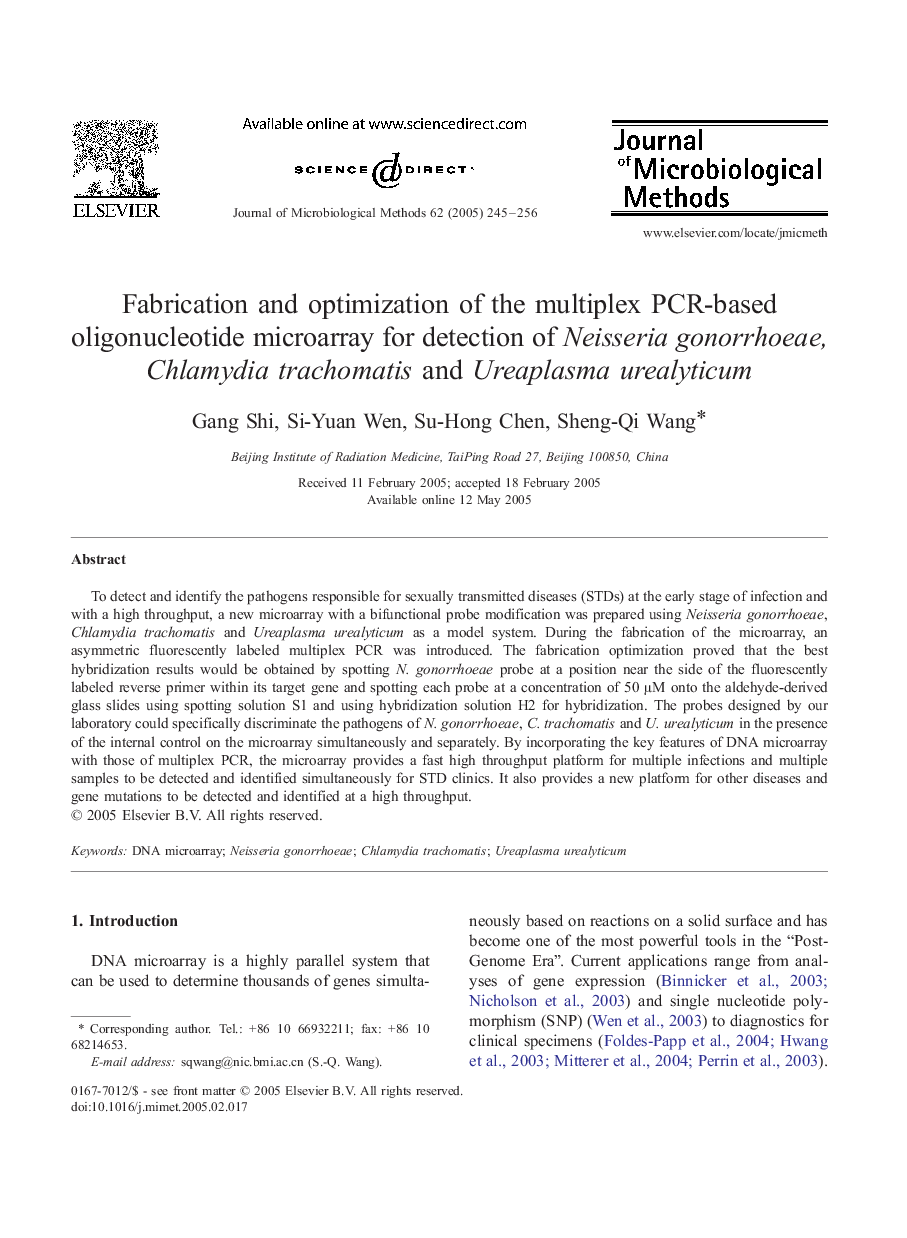| Article ID | Journal | Published Year | Pages | File Type |
|---|---|---|---|---|
| 10889894 | Journal of Microbiological Methods | 2005 | 12 Pages |
Abstract
To detect and identify the pathogens responsible for sexually transmitted diseases (STDs) at the early stage of infection and with a high throughput, a new microarray with a bifunctional probe modification was prepared using Neisseria gonorrhoeae, Chlamydia trachomatis and Ureaplasma urealyticum as a model system. During the fabrication of the microarray, an asymmetric fluorescently labeled multiplex PCR was introduced. The fabrication optimization proved that the best hybridization results would be obtained by spotting N. gonorrhoeae probe at a position near the side of the fluorescently labeled reverse primer within its target gene and spotting each probe at a concentration of 50 μM onto the aldehyde-derived glass slides using spotting solution S1 and using hybridization solution H2 for hybridization. The probes designed by our laboratory could specifically discriminate the pathogens of N. gonorrhoeae, C. trachomatis and U. urealyticum in the presence of the internal control on the microarray simultaneously and separately. By incorporating the key features of DNA microarray with those of multiplex PCR, the microarray provides a fast high throughput platform for multiple infections and multiple samples to be detected and identified simultaneously for STD clinics. It also provides a new platform for other diseases and gene mutations to be detected and identified at a high throughput.
Related Topics
Life Sciences
Biochemistry, Genetics and Molecular Biology
Biotechnology
Authors
Gang Shi, Si-Yuan Wen, Su-Hong Chen, Sheng-Qi Wang,
